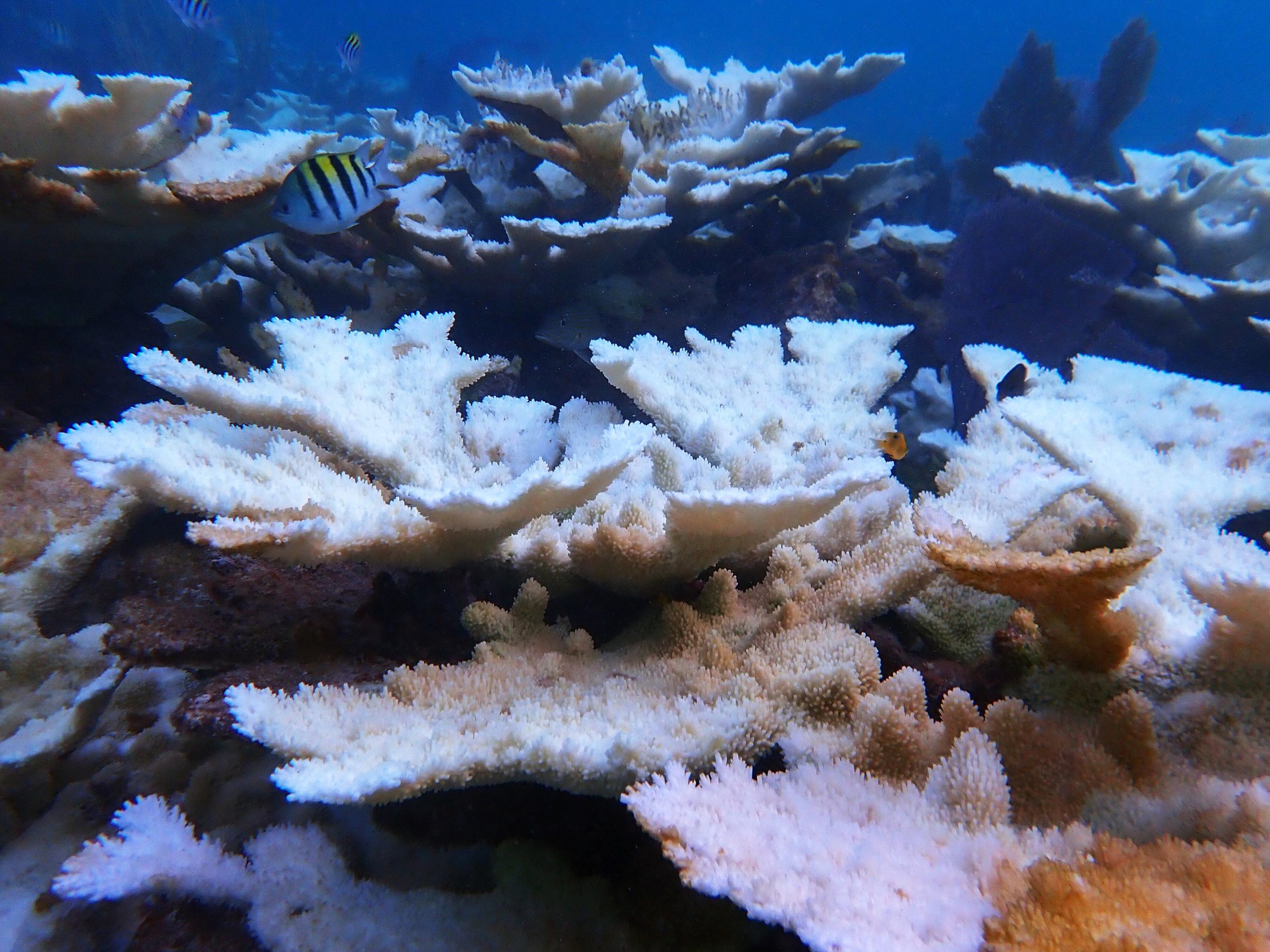
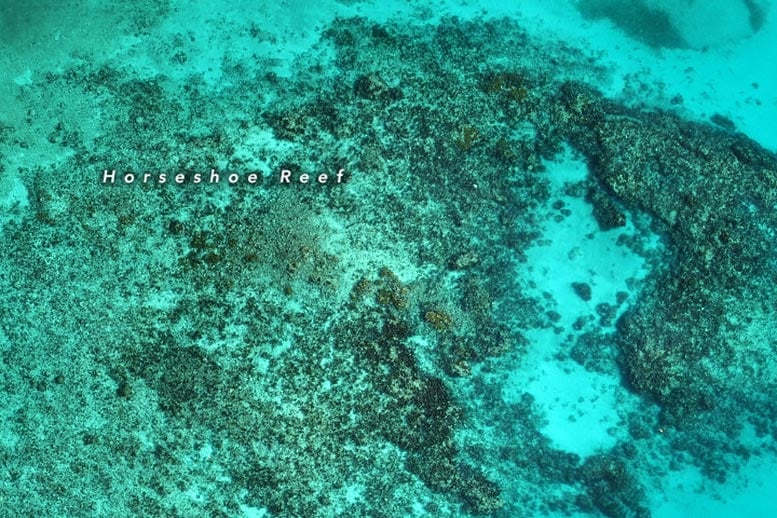
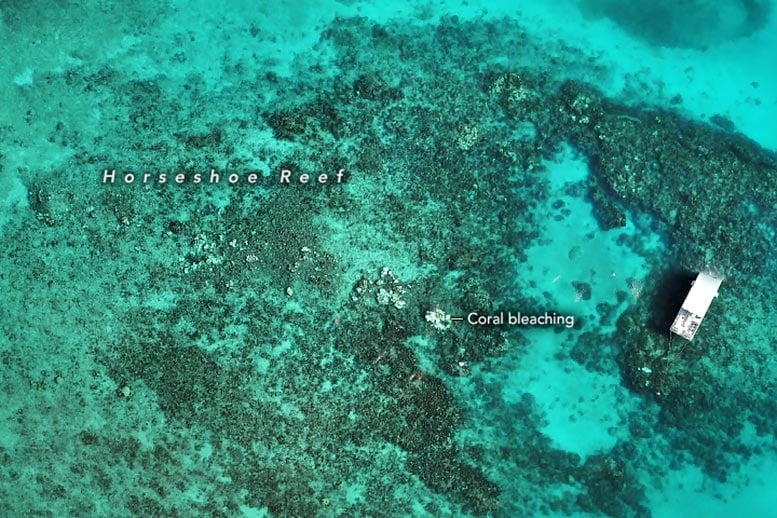
After a brutally hot summer in 2023 that caused widespread bleaching and coral death, summer 2024 was more favorable for the state’s vulnerable reefs.
Once vibrant and diverse, Florida’s coral reefs have dramatically declined, suffering from a 90% reduction in healthy coral cover since the 1970s due to factors like disease, pollution, and increasingly, heat stress. In response, innovative restoration initiatives like the Mission: Iconic Reefs program are underway, aiming to restore significant coral cover by 2040.
Coral Decline in Florida
Decades ago, Florida’s coral reef tract was one of the ocean’s greatest treasures. Stretching 350 miles (560 kilometers) from end to end, the world’s third-largest reef quivered and swayed with life. It was a place where snorkelers would encounter an abundance of brain, pillar, fan, staghorn, and elkhorn coral, where waters teemed with shoaling fish, and sea turtles and sharks cruised amidst creviced mazes of calcium carbonate.
Hints of that richness remain, but instead of colorful coral gardens, thick mats of grass-like seaweed known as algal turf now cover much of the reef. In many areas, the colors are muted and marine life is scarce. According to National Oceanographic and Atmospheric Administration (NOAA) estimates, the reef’s healthy coral cover has fallen 90 percent since the late 1970s, likely due to a combination of factors, including disease, heat stress, sediment and nutrient pollution, development, hurricanes, and damage from boats.
Escalating Heat Threatens Recovery
Summer 2023, a period with record-high water temperatures, further damaged the reef. The Straits of Florida faced water temperatures of 87 degrees Fahrenheit (31 degrees Celsius) and above as early as mid-June, and they remained, in many places, above that level into October. In some areas, temperatures occasionally soared above 93°F.
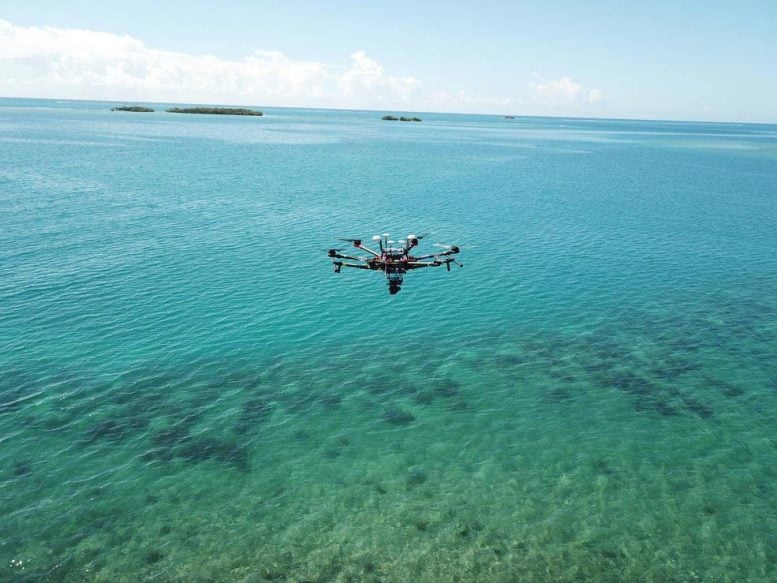
Corals in this region typically bleach, or lose color, when waters exceed 87°F. Bleaching occurs when beneficial algae that live in coral skeletons are expelled, depriving coral of sugars and proteins critical to growth and reproduction. While coral can recover from bleaching, it is often the first step toward starvation and death. The small anemone-like animals start to die outright in Florida’s waters when water temperatures exceed 90°F for a prolonged period of time. Note that in some other parts of the world, some species of corals are known for being able to survive higher temperatures than that.
Advancing Coral Research With Technology
“Coral reef is sometimes called the rainforest of the sea, and we saw Florida’s reef ravaged by the underwater equivalent of a wildfire,” said Ved Chirayath, an earth scientist at the University of Miami. Chirayath previously spent a decade at NASA’s Ames Research Center, where he developed innovative technologies to capture clear images of coral using a remote sensing technique called fluid lensing. The technique removes distortions caused by the movement of water and the attenuation of light in the water column that make aerial images of reefs much more difficult to interpret than features on land.
When NOAA invited Chirayath to bring his drone and fluid lensing technology to the Florida Keys to help monitor the reef amid surging temperatures in 2023, he jumped at the opportunity. Chirayath acquired the images at the top of this page with a high-performance digital camera (FluidCam) mounted on a drone and processed them with the fluid lensing technique.
The imagery provides a high-resolution look at the impact of bleaching at Horseshoe Reef, a cluster of small reefs in the upper Florida Keys near Key Largo. The lower image on the top of this page, captured from a height of about 100 feet (30 meters), shows bleached and dead corals on August 8, 2023, after water temperatures had hit record highs. The upper image on the top of this page shows the same area on May 18, before water temperatures had risen to dangerous levels for coral.
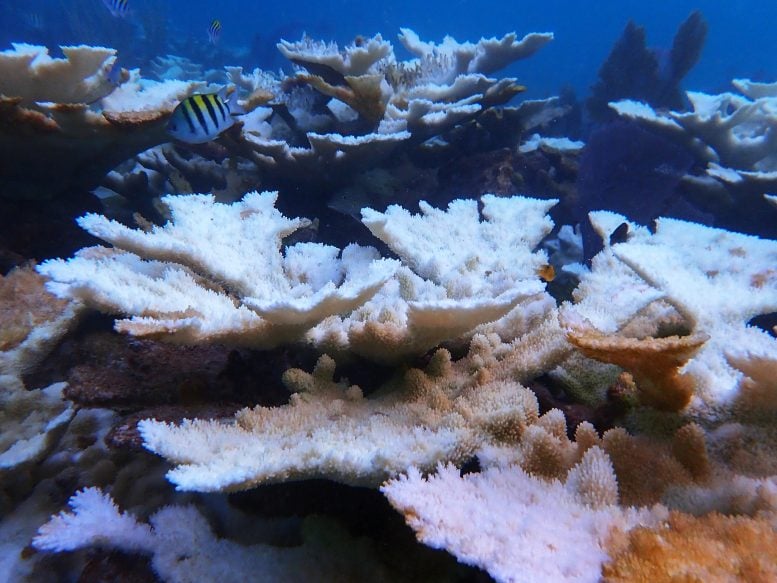
Restoration Efforts Amidst Rising Temperatures
Though it once had some of the largest and healthiest stands of elkhorn and staghorn corals in the state, Horseshoe Reef has struggled in recent decades, like the rest of Florida’s reefs. NOAA and several partners have been working to restore Horseshoe Reef by planting as many as 1,000 young corals as a part of its Mission: Iconic Reefs program.
The entire program, which targets seven reefs throughout Florida, aims to restore 3 million square feet—an area the size of 52 football fields—to at least 25 percent coral cover by 2040. However, key reef-building species such as elkhorn and staghorn lost more than 75 percent of their restored populations at some reefs in summer 2023, according to NOAA assessments of outplanted individuals published in 2024.
Utilizing High-Tech Imaging for Coral Analysis
“What you can see in the FluidCam image actually goes beyond bleaching,” explained Katey Lesneski, a marine biologist who inspected Horseshoe Reef several times during the worst of the heat. “The heat in summer 2023 was so early and intense that we actually had coral tissues almost instantly dying and sloughing off—something I’ve only seen in the laboratory before this,” she said.
An analysis published by Lesneski and colleagues at NOAA as well as partner organizations later found that of the 160 elkhorn coral genotypes present in this area prior to the summer 2023 heat, only 37 types were still alive in 2024—not enough to support normal coral reproduction. The photograph above, taken by Lesneski on July 25, 2023, shows bleached and likely dead elkhorn coral at Horseshoe Reef.
Bleaching can be quite subtle when viewed from above through water, and it can also be short-lived or obscured by algae, so it remains challenging to track bleaching or coral death with satellites. Chirayath’s ultimate goal is to use high-resolution images, like those from FluidCam, and machine-learning techniques to train software packages to map coral reefs in greater detail and in near-real time using satellite imagery. To refine and improve fluid lensing techniques, Chirayath conducted 13 international field campaigns in 2024 and expects to collect coral reef imagery in five new countries in 2025, including Madagascar, India, the Maldives, Australia, and the Seychelles.
Global Bleaching Events and Local Reprieves
Citizen scientists are using an iPad game called NeMO-NET to help speed the mapping process, and Chirayath is using observations from FluidCam as part of two ongoing projects supported by NASA’s Biodiversity and Ecological Forecasting Program—MarineVERSE (The Marine Biodiversity and Scaling Project) and PICOGRAM (Prediction of Individual Coral Growth Recruitment and Mortality) to develop a new high-resolution global map of coral. The information such efforts produce could make it easier to direct resources and research efforts toward reefs that are most at risk.
Meanwhile, all over the world, corals are struggling through what NOAA describes as the fourth global bleaching event on record. Bleaching has occurred in at least 70 countries and territories since January 1, 2023, or about 75 percent of the world’s coral reefs. Corals across large swaths of the Atlantic and Pacific oceans remain at high risk in the coming months, according to bleaching outlooks from NOAA’s Coral Reef Watch.
The Future of Coral Conservation
Florida’s reefs, however, got a partial reprieve in 2024. Though global temperatures remained elevated in 2024 and continued to break records, like they did in 2023, ocean temperatures in the Straits of Florida eased and bleaching was minimal, buying restoration efforts some time. The pair of images above shows how sea surface temperature anomalies compared on July 11, 2023, when temperatures were above the bleaching threshold, and July 11, 2024, when they were more moderate and below the threshold.
“We’re incredibly fortunate that we didn’t see widespread bleaching again this summer, but we know that heat waves like we saw in 2023 are likely to happen again,” Lesneski said. “Continuing to restore vulnerable reefs with coral that’s resilient to heat stress and disease and performing genetic rescues is going to be critical in the coming years.” A genetic rescue involves harvesting small amounts of coral and keeping them alive in facilities on land—similar to a zoo—to preserve genetic lines.
The Ongoing Challenge of Coral Conservation
However, NASA Jet Propulsion Laboratory scientist Peter Kalmus warns that even these efforts may not be enough. Kalmus has analyzed sea surface temperature data collected by satellites and used Earth systems models to project how often the world’s coral reefs are likely to experience bleaching conditions. In a study published in Earth’s Future, he estimated that about 80 percent of reef locations currently experience bleaching conditions every five years, what he considers an untenable rate for healthy reefs. In roughly two decades, he calculated that number would rise to 99 percent of reefs without rapid reductions in the use of fossil fuels.
NASA Earth Observatory images by Michala Garrison, using FluidCam data provided by Ved Chirayath (University of Miami) and data from the MUR SST (Multi-scale Ultra-high Resolution Sea Surface Temperature) project. Drone photograph courtesy of Ved Chirayath (University of Miami). Coral bleaching photograph courtesy of Katey Lesneski (NOAA).